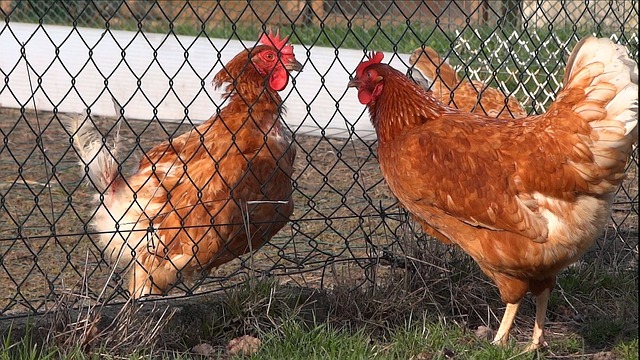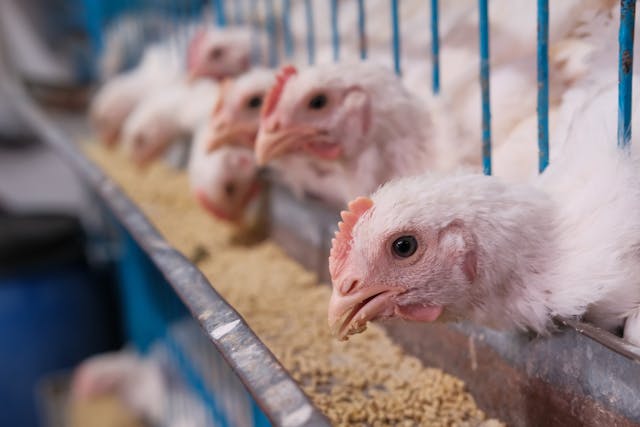As the world grapples with climate change and environmental degradation, sustainable chicken farming practices are more crucial than ever. Solar power has emerged as a game-changer for chicken farmers to minimize their carbon footprint while maximizing efficiency.
Whether you are a seasoned poultry keeper or a humble backyard chicken enthusiast, these six solar innovations make your operations more environmentally friendly and cost-effective.
1. Submersible Solar Well Pumps
Water is the backbone of chicken farming to develop healthy and productive birds. With solar-operated submersible well pumps, you can reliably access groundwater, giving your chickens consistent hydration while dramatically cutting your energy costs.
Unlike traditional electric water pumps, submersible solar well pumps use renewable solar energy to power their motors. They give you a steady, reliable flow of deep well water in an eco-friendly way.
They are especially effective for remote farms lacking access to the power grid or where running electrical lines would be too expensive. But even if you are in a developed area, submersible solar well pumps remain a reliable and sustainable way to pump water from deep wells. They can even improve your deep well access with their various installation types, such as centrifugal, diaphragm, or helical water pumps.
2. Solar-Powered Ventilation Setup

Chickens are prone to heat stress, significantly affecting egg production, growth rates, and overall well-being. This is why it’s important to manage the temperature and airflow in a chicken coop, especially if you want your elegant gold wyandottes to remain as prolific egg layers and your robust cornish cross broilers to develop into meaty birds.
Solar-powered ventilation systems enable you to control the climate in your chicken coop without relying on traditional electricity. Solar panels can power fans or entire ventilation systems. The advanced ones are even equipped with thermostats and programmable controls that automate temperature regulation based on your coop’s conditions.
Well-distributed setups are particularly effective for larger barns housing thousands of chickens because they can help reduce temperature disparities across different zones. Solar-powered ventilation setups forge the way to sustainable yet efficient mass production.
3. Electric Fences Powered by Photovoltaic Panels
Predator deterrence is a non-negotiable requirement for chicken farms, especially if you are operating in a rural or forested area. Predators like foxes, raccoons, and aerial hunters are a serious danger to chicken lives and your operations. However, traditional electric fencing can be costly to operate.
Enter solar-powered electric fences, an ideal way to keep your flock safe while keeping costs manageable. They are powered by photovoltaic panels that draw energy from the sun during the day and store excess power in batteries for nighttime use.
Modern setups even have remote control options, so you can easily turn the fences on and off and regulate voltage. Get high-grade batteries for continuous operations even in low sunlight periods.
With solar-powered electric fences, you can rest easy knowing all your chickens, from your prized heritage breeds to your commercial dual-purpose birds, are safe.
Solar Cells: Solar panels have numerous solar cells made from semiconductor materials, typically silicon, exhibiting photovoltaic effects. Sunlight strikes these cells and excites electrons, creating an electric current that can be harnessed to power solar-operated infrastructure such as electric fences.
4. Solar Lighting System
Chicken productivity partly depends on their photoperiod—the number of daylight hours they experience. Artificial lighting can mimic natural daylight and extend chicken productivity, especially during longer winter nights. However, traditional lighting systems use costly grid power. The solution is a solar lighting system.
Solar-powered LED lamps charge throughout the day and provide bright, consistent lighting during the night. Advanced LEDs mimic natural light more closely than generic white lights, enhancing egg-laying cycles without causing stress. Some lighting systems also have advanced features, such as motion detectors that turn the lights on only when the coop is active.
Solar-powered lighting systems are a perfect complement to sustainable chicken farming. They enable you to boost production while adhering to eco-friendly practices.
5. Solar-Automated Feed Dispensers

Image by Towfiqu barbhuiya on Pexels
Efficient feed management is another cornerstone of chicken farming. It can get complicated quickly as you manually distribute chicken feed, provide precise portions, regulate feed storage units, and prevent spoilage.
Solar-automated feed dispensers are not only sustainable because they use renewable energy, but they are also efficient because they automate manual and routine tasks.
Automated systems can use solar arrays to power belt conveyors or timed feeders. Solar energy can power refill motors from central silos to dispensing hubs. Add sensors and timers for precise feeding intervals and portion sizes, ensuring chickens are not overfed, and you are not wasting resources.
With automation, reduced mechanical downtime, and zero grid electricity usage, solar-automated feed systems are a sustainable and cost-effective feed strategy. You can get longer-term savings and accelerate ROI, especially if you have medium to large-scale poultry operations.
6. Waste Management Systems Without Grid Electricity
Waste management is one of the dirtiest parts of chicken farming, but it is necessary to prevent environmental hazards and maintain a clean and safe environment for your birds. It doesn’t have to be a dirty job. You can quickly and efficiently eliminate waste with proper waste management systems.
Solar-powered composting systems are the perfect solution. They process chicken waste into nutrient-rich fertilizer without relying on grid electricity. They use solar-powered fans to aerate compost piles and reduce the time it takes to break down chicken manure. With advanced features such as odor mitigation and thermal regulation, these systems can reduce ammonia emissions and eliminate pathogens.
Solar-powered composting systems can be used to dispose of waste sustainably and generate additional revenue by producing organic fertilizer. Reduce your chicken farm’s environmental footprint while generating more income.
Sanitation Program: In addition to using an efficient waste management system, there are many ways to prevent poultry diseases. A good sanitation program includes regularly cleaning and disinfecting facilities, providing adequate ventilation, avoiding overcrowding, and limiting environmental stresses like chilling and overheating.
Think Ahead with Solar Power
Solar power helps create an efficient chicken farming system and a sustainable future for our planet. From solar-powered well pumps that ensure your chickens never go thirsty to waste management systems that turn manure into gold, these solar-powered technologies contribute to a cost-effective and greener farm.
Planning carefully based on your farm size, location, and access to funding will make your chicken farm thrive on renewable solar energy. Take your first steps to solar today!


